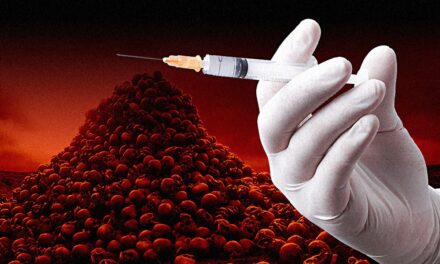Lethal Infection of Human ACE2-Transgenic Mice Caused by SARS-CoV-2-related Pangolin Coronavirus GX_P2V(short_3UTR)
Abstract
SARS-CoV-2-related pangolin coronavirus GX_P2V(short_3UTR) can cause 100% mortality in human ACE2-transgenic mice, potentially attributable to late-stage brain infection. This underscores a spillover risk of GX_P2V into humans and provides a unique model for understanding the pathogenic mechanisms of SARS-CoV-2-related viruses.
Dear Editor
Two SARS-CoV-2-related pangolin coronaviruses, GD/2019 and GX/2017, were identified prior to the COVID-19 outbreak (1, 2). The respective isolates, termed pCoV-GD01 and GX_P2V, were cultured in 2020 and 2017, respectively (2, 3). The infectivity and pathogenicity of these isolates have been studied (4–6). The pCoV-GD01 isolate, which has higher homology with SARS-CoV-2, can infect and cause disease in both golden hamsters and hACE2 mice (4). In contrast, while GX_P2V can also infect both species, it does not appear to cause obvious disease in these animals (5, 6). We previously reported that the early passaged GX_P2V isolate was actually a cell culture-adapted mutant, named GX_P2V(short_3UTR), which possesses a 104-nucleotide deletion at the 3’-UTR (6). In this study, we cloned this mutant, considering the propensity of coronaviruses to undergo rapid adaptive mutation in cell culture, and assessed its pathogenicity in hACE2 mice. We found that the GX_P2V(short_3UTR) clone can infect hACE2 mice, with high viral loads detected in both lung and brain tissues. This infection resulted in 100% mortality in the hACE2 mice. We surmise that the cause of death may be linked to the occurrence of late brain infection.
The GX_P2V(short_3UTR) mutant, initially isolated from the early passages of the GX_P2V sample (6), and the GX_P2V virus itself, have not been studied in terms of their adaptive mutations in cell cultures. To obtain a genetically homogenous clone for animal experiments, we cloned the passaged mutant through two successive plaque assays. Eight viral clones were chosen for next-generation sequencing (National Genomics Data Center of China, GSA: CRA014225). These clones, when compared with the genome of the original mutant (6), all shared four identical mutations: ORF1ab_D6889G, S_T730I, S_K807N, and E_A22D (Supporting Information, Table S1). Clone 7, named as GX_P2V C7, was randomly selected for the evaluation of viral pathogenicity in hACE2 mice (Figure 1A). The hACE2 mouse model expressing human ACE2 under control of the CAG promoter was developed using random integration technology by Beijing SpePharm Biotechnology Company.
A Mutations in GX_P2V C7 compared to the GX_P2V(short_3UTR) isolate (NCBI accession number: MW532698). The four identical mutations are shown in bold. B Survival of hACE2 transgenic mice following intranasal infection with GX_P2V C7 (n = 4), inactivated GX_P2V C7 (i-C7, n = 4), and mock infection (n = 4). The number of deceased mice on each specific day is annotated on the left of the survival curve. C Percentage of initial weight of hACE2 transgenic mice after intranasal infection with GX_P2V C7 (n = 4), i-C7 (n = 4), and mock infection (n = 4). The statistical significance of the differences between mock-infected (n = 4, blue dots) and GX_P2V C7-infected (n = 4, red dots) or i-C7-infected mice (n = 4, orange dots) at 6 or 7 dpi are shown. The error bars represent the means ± SDs. D Quantification of GX_P2V N gene copies in heart, liver, spleen, lung, kidney, tongue, intestine, stomach, trachea, brain, eye, and turbinate homogenates at 3- and 6-day post-infection (dpi) (n = 4 per group). The limit of detection (LOD) for viral RNA loads in the original samples was Log10[102 copies/mg]. The error bars represent the means of Log10[copies/mg] ± SDs. The significances of the comparisons in the lung, brain, and turbinate are shown. E Infectious viral titers in lung, brain, eye, and turbinate homogenates were measured by plaque forming assay at 3 and 6 dpi (n = 4 per group). The statistical significance of the differences in the lung, brain, and turbinate are shown. The error bars represent means of Log10[pfu/mL] ± SDs. F, G Hematoxylin and eosin (H&E) staining and immunohistochemical (IHC) staining with an anti–SARS-CoV-2 N-specific antibody (SARS-CoV-2) revealed viral antigen–positive cells (brown) in the lung (F) and brain (G), as shown at high magnification in the inset. Scale bars, 500 μm (F) and 1 mm (G), respectively. *P < 0.05, **P < 0.01, ***P < 0.001, ****P < 0.0001, P > 0.05, not significant (ns); two-way ANOVA followed by Sidak’s multiple comparison test.
We initially assessed whether GX_P2V C7 could cause disease in hACE2 mice by monitoring daily weight and clinical symptoms. A total of four 6 to 8-week-old hACE2 mice were intranasally infected with a dosage of 5×105 plaque-forming units (pfu) of the virus. Four mice inoculated with inactivated virus and four mock-infected mice were used as controls. Surprisingly, all the mice that were infected with the live virus succumbed to the infection within 7-8 days post-inoculation, rendering a mortality rate of 100% (Figure 1B). The mice began to exhibit a decrease in body weight starting from day 5 post-infection, reaching a 10% decrease from the initial weight by day 6 (Figure 1C). By the seventh day following infection, the mice displayed symptoms such as piloerection, hunched posture, and sluggish movements, and their eyes turned white. The criteria for clinical scoring of the mice and the daily clinical scores post-infection with GX_P2V C7 are provided in the Supporting Information, Figure S1.
We then evaluated the tissue tropism of GX_P2V C7 in hACE2 mice. Using the infection method described above, eight hACE2 mice were infected, eight mice were inoculated with inactivated virus, and another eight mock-infected mice were used as controls. The organs of four randomly selected mice in each group were dissected on days 3 and 6 post-infection for quantitative analysis of viral RNA and titer. We detected significant amounts of viral RNA in the brain, lung, turbinate, eye, and trachea of the GX_P2V C7 infected mice (Figure 1D), whereas no or a low amount of viral RNA was detected in other organs such as the heart, liver, spleen, kidneys, tongue, stomach, and intestines. Specifically, in lung samples, we detected high viral RNA loads on days 3 and 6 post-infection, with no significant difference between these two time points (∼ 6.3 versus ∼ 5.8 Log10[copies/mg]). In brain samples, on day 3 post-infection, viral RNA was detected in all four infected mice, with an average value of 5.4 Log10[copies/mg]. Notably, by day 6 post-infection, we detected exceptionally high viral RNA loads (∼ 8.5 Log10[copies/mg]) in the brain samples from all four infected mice (Figure 1D). On days 3 and 6 post-infection, the viral RNA loads in the turbinate were similar, approximately 4.1 and 3.9 Log10[copies/mg], respectively. The viral RNA loads in the trachea and eyes of the mice surpassed the limit of detection only on day 6 post-infection, with values of 2.6 and 3.8 Log10[copies/mg], respectively. Regarding the infectious viral titers, lung tissues at day 3 post-infection had a value of ∼ 1.8 Log10[pfu/mg], which decreased to ∼ 0.5 Log10[pfu/mg] by day 6. Importantly, the highest infectious titers were detected in the brain on day 6, which was significantly greater than that on day 3 (∼ 0.9 vs ∼ 4.8 Log10[pfu/mg]) (Figure 1E). Additionally, there were no significant differences in the infectious titers in the turbinate between day 3 (∼ 0.9 Log10[pfu/mg]) and day 6 (∼ 1.2 Log10[pfu/mg]) (Figure 1E). By day 6, approximately 2.0 Log10[pfu/mg] was detected in the eyes of two mice. Neither inactivated GX_P2V C7 nor mock infection caused death or any clinical symptoms in the mice (Figure 1B-C and Supporting Information, Figure S2). In summary, in the mice infected with live virus, the viral load in the lungs significantly decreased by day 6; both the viral RNA loads and viral titers in the brain samples were relatively low on day 3, but substantially increased by day 6. This finding suggested that severe brain infection during the later stages of infection may be the key cause of death in these mice.
To determine the mechanisms underlying GX_P2V C7-induced death in hACE2 mice, we examined the pathological changes, presence of viral antigens, and cytokine profiles in the lung and brain tissues of the mice on days 3 and 6 post-infection(Figure 1F-G, and Supporting Information, Figure S3 and S4). On both days, compared to those of control mice, the lungs of infected mice showed no significant pathological alterations, with only minor inflammatory responses due to slight granulocyte infiltration (Figure 1F). On day 3 post-infection, shrunken neurons were visible in the cerebral cortex of the mice. By day 6, in addition to the shrunken neurons, there was focal lymphocytic infiltration around the blood vessels, although no conspicuous inflammatory reaction was observed (Figure 1G). Upon staining for viral nucleocapsid protein via immunohistochemistry, viral antigens were detected in both the lungs and brains on days 3 and 6 post-infection, with extensive viral antigens notably present in the brain on day 6 (Figure 1F-G). These findings align with the viral RNA load assessments in the lung and brain tissues (Figure 1D). We also performed a Luminex cytokine assay to detect 31 cytokines/chemokines in the lung and brain tissues of the mice (Supporting Information, Figure S3 and S4). Consistent with the pathological findings, there were slight increases or decreases in the levels of many cytokines/chemokines in lung and brain tissues compared to those in control tissues, but the levels of key inflammatory factors, such as IFN-γ, IL-6, IL-1β, and TNF-α, did not significantly change. In brief, these analyses revealed that GX_P2V C7 infection in hACE2 mice did not lead to severe inflammatory reactions, a finding that aligns with previous reports by Zhengli Shi’s group using GX_P2V infection in two different hACE2 mouse models (5), as well as our own findings in the golden hamster model (6).
To the best of our knowledge, this is the first report showing that a SARS-CoV-2-related pangolin coronavirus can cause 100% mortality in hACE2 mice, suggesting a risk for GX_P2V to spill over into humans. Our findings are evidently inconsistent with those of Zhengli Shi et al. (5), who tested the virulence of GX_P2V in two different hACE2 mouse models. It is important to note that we did not isolate the wild-type GX_P2V strain. The study by Zhengli Shi et al tested the GX_P2V(short_3UTR) variant that we reported. However, the adaptative evolutionary changes of this variant during their laboratory culture remain understudied. In fact, according to additional infection experiments, the uncloned GX_P2V(short_3UTR) also resulted in 100% mortality in hACE2 mice. Due to the propensity of coronaviruses to undergo adaptive mutation during passage culture, we cloned and analyzed mutations in GX_P2V(short_3UTR), focusing specifically on the pathogenicity of the cloned strains. The high pathogenicity mechanism of GX_P2V C7 in hACE2 mice, in the absence of the wild-type GX_P2V control, requires further investigation. Compared to the original sequence of GX_P2V(short_3UTR), GX_P2V C7 has two amino acid mutations in the spike protein. Given the close relationship between coronavirus virulence and spike protein mutations (7), it is possible that GX_P2V C7 has undergone a virulence-enhancing mutation. However, it is important to note that our hACE2 mouse model may be relatively unique. The company has not yet published a paper on this hACE2 mouse model, but our results suggest that hACE2 may be highly expressed in the mouse brain. Additionally, according to the data provided by the company, these hACE2 mice have abnormal physiology, as indicated by relatively reduced serum triglyceride, cholesterol, and lipase levels, compared to those of wild-type C57BL/6J mice. In summary, our study provides a unique perspective on the pathogenicity of GX_P2V and offers a distinct alternative model for understanding the pathogenic mechanisms of SARS-CoV-2-related coronaviruses.
ETHICS STATEMENT
All animals involved in this study were housed and cared for in an AAALAC (Association for Assessment and Accreditation of Laboratory Animal Care) accredited facilities. The procedure for animal experiments (IACUC-2019-0027) was approved by the Institutional Animal Care and Use Committee of the Fifth Medical Center, General Hospital of the Chinese People’s Liberation Army, and complied with IACUC standards.
Source: https://www.biorxiv.org/content/10.1101/2024.01.03.574008v1.full
Bitchute: https://www.bitchute.com/channel/YBM3rvf5ydDM/
Telegram: https://t.me/Hopegirl587
EMF Protection Products: www.ftwproject.com
QEG Clean Energy Academy: www.cleanenergyacademy.com
Forbidden Tech Book: www.forbiddentech.website














